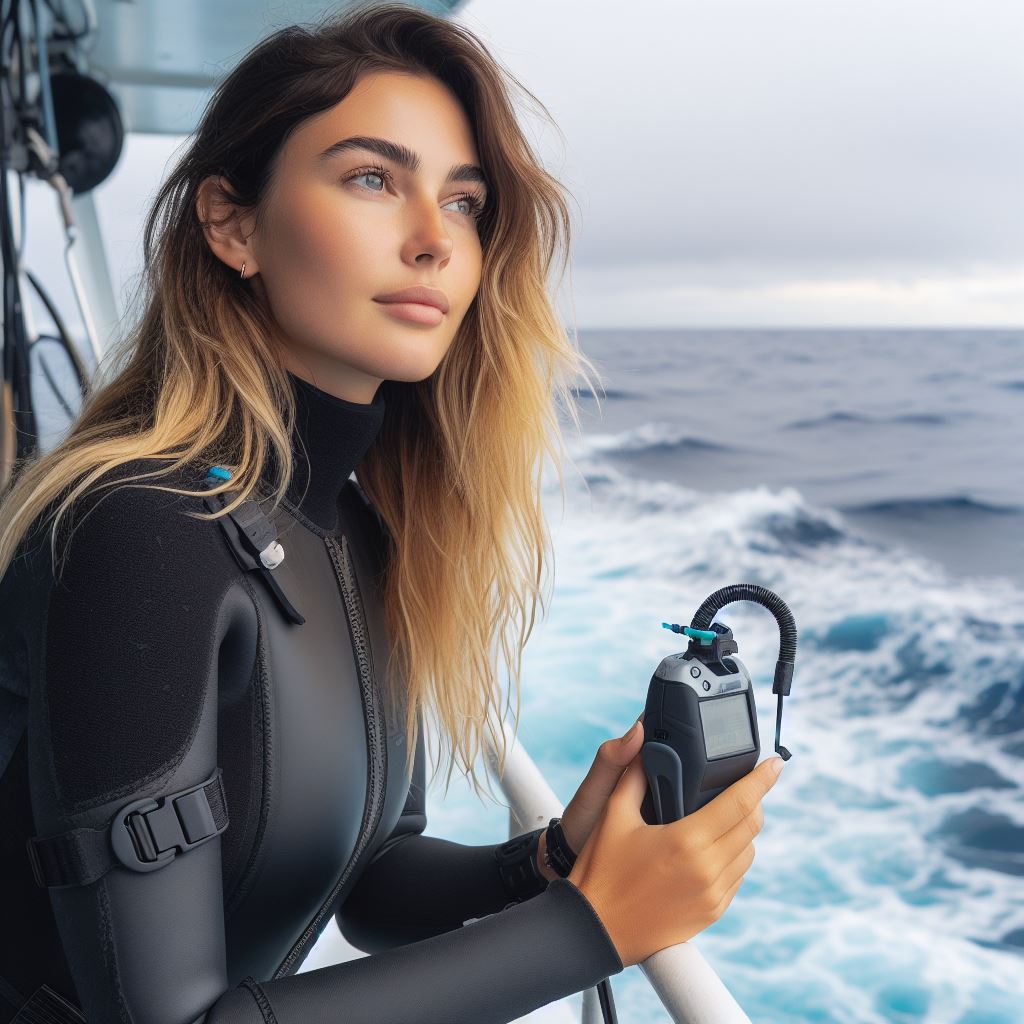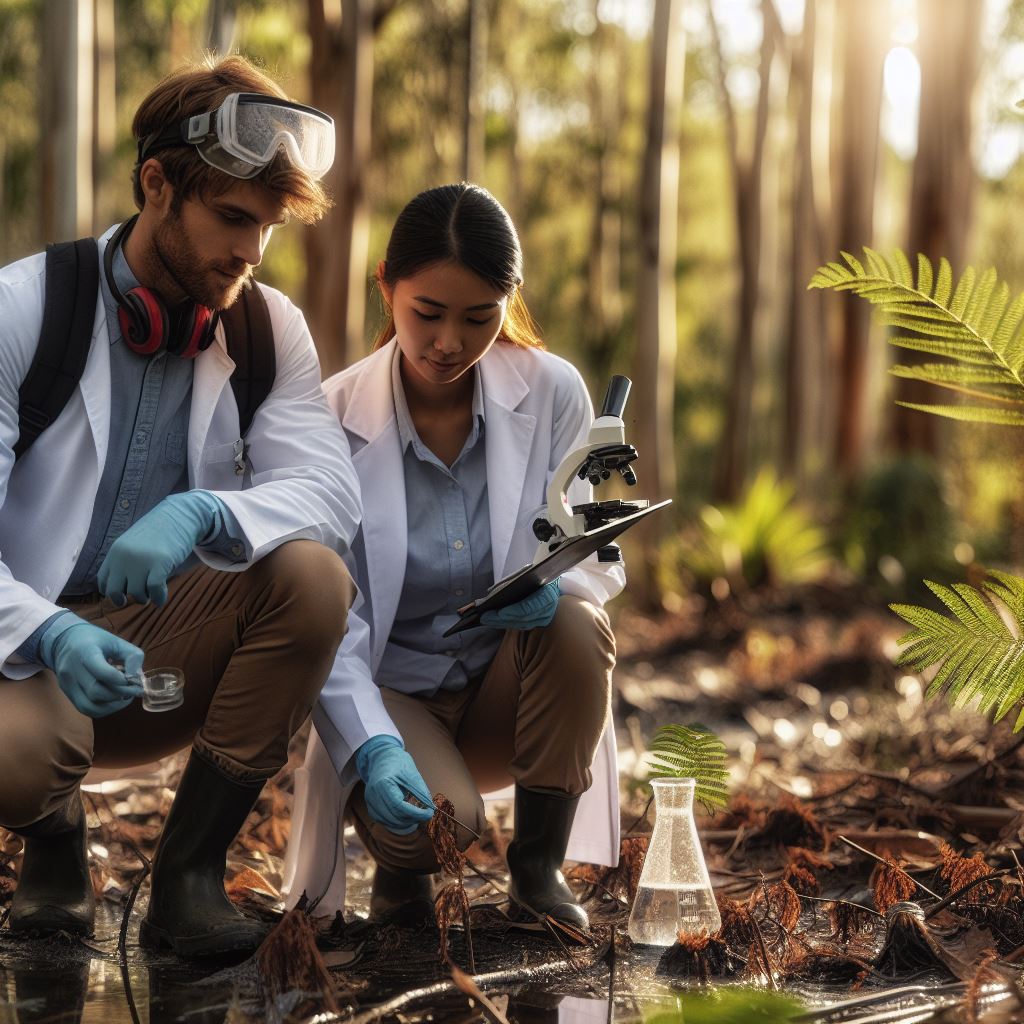Introduction
Australia’s marine life faces significant challenges due to climate change, impacting its rich biodiversity and delicate ecosystems. As temperatures rise and weather patterns shift, marine organisms encounter unprecedented threats to their survival and well-being.
The Great Barrier Reef, a global icon renowned for its stunning coral formations and diverse marine species, is particularly vulnerable. Increasing sea temperatures trigger coral bleaching events, causing widespread damage to reef ecosystems.
Bleaching occurs when corals expel the algae living within their tissues, leading to their eventual death if conditions persist.
Ocean acidification, another consequence of rising carbon dioxide levels, further imperils marine life. The increased acidity of seawater affects the ability of corals and shellfish to build and maintain their calcium carbonate structures, compromising their resilience and health.
Sea-level rise, attributed to melting polar ice caps, compounds the challenges faced by marine ecosystems along Australia’s coastlines.
Coastal habitats, crucial for breeding, feeding, and nesting, are at risk of inundation and erosion, threatening the survival of species like sea turtles and shorebirds.
Furthermore, climate change disrupts the intricate balance of marine ecosystems, altering species distributions and migration patterns.
This disruption can lead to mismatches in predator-prey relationships and cascading effects throughout the food web, ultimately impacting the stability and productivity of marine environments.
In summary, climate change poses a formidable threat to Australian marine life, jeopardizing the resilience and biodiversity of its underwater realms.
Understanding the multifaceted impacts of climate change on marine ecosystems is essential for developing effective conservation strategies and mitigating future threats to Australia’s precious marine biodiversity.
Aussie Marine Life
Australia hosts diverse marine life, notably the Great Barrier Reef, a UNESCO World Heritage Site.
Dolphins and whales’ frequent Australian coasts. Unique species like dugongs and sea dragons thrive here.
The Great Barrier Reef supports diverse marine life, crucial for ocean health. Dolphins and whales maintain ecosystem balance.
They indicate overall marine health. Many Australian species adapt remarkably to challenging environments.
The Great Barrier Reef showcases vibrant coral formations and diverse fish. Dolphins exhibit agile swimming and acrobatics.
Whales awe with their massive presence. Australia’s marine life attracts locals and tourists. Snorkeling and scuba diving offer firsthand experiences.
Conservation efforts aim to protect marine ecosystems through sanctuaries and research. Climate change threatens marine life.
Rising temperatures harm coral reefs and habitats. Sea level rise endangers nesting sites and coastal habitats.
Australia’s marine life is diverse and iconic. Climate change jeopardizes its survival. Urgent action is needed to protect and preserve Australia’s marine ecosystems.
Climate Change and its Impact
Climate change, driven by human activities, affects marine life through warming waters, ocean acidification, and extreme weather events.
Rising temperatures disrupt marine ecosystems, impacting species’ reproduction and migration patterns.
Ocean acidification harms corals and calcifying organisms, weakening their ability to form shells.
Coral bleaching, caused by high temperatures, leads to reef decline and loss of marine biodiversity.
Your Personalized Career Strategy
Unlock your potential with tailored career consulting. Get clear, actionable steps designed for your success. Start now!
Get StartedSea-level rise and extreme weather events further threaten coastal habitats and marine species.
Australian marine ecosystems, like the Great Barrier Reef, suffer from warming waters and coral bleaching.
To mitigate climate change impacts, global efforts to reduce greenhouse gas emissions are essential.
Renewable energy adoption, sustainable fishing practices, and marine ecosystem protection are critical strategies.
Education and collaboration among governments, scientists, and communities are vital for effective climate change action.
Together, we can protect marine life and ensure the resilience of Australian marine ecosystems.
Effects on Coral Reefs
Climate change has had a devastating impact on coral reefs worldwide, including the Great Barrier Reef in Australia.
The increasing temperatures of the ocean have led to coral bleaching, which is a phenomenon with severe consequences for both the reefs themselves and the marine life that depends on them.
Coral Bleaching and its Consequences
Coral bleaching occurs when the stress caused by rising water temperatures, pollution, or other environmental factors leads coral to expel the symbiotic algae living within their tissues.
These algae provide the coral with essential nutrients and give them their vibrant colors. Without the algae, coral becomes pale or completely white, hence the term “coral bleaching.”
When coral bleaches, it’s a sign of distress and indicates that the coral is under extreme pressure. Additionally, after a prolonged period of bleaching, the coral becomes susceptible to disease, unable to reproduce, and can eventually die.
This not only affects the coral itself but also has ripple effects throughout the entire marine ecosystem.
The consequences of coral bleaching for marine life are significant. Coral reefs provide shelter, breeding grounds, and a source of food for a diverse range of marine organisms.
When coral dies or becomes severely degraded due to bleaching, countless species of fish, crustaceans, and other marine animals lose their homes and food sources.
This disrupts the delicate balance of the ecosystem, leading to a decline in biodiversity and potential collapse of the food chain.
Efforts to Protect and Restore Coral Reefs in Australia:
Recognizing the urgent need to protect and restore coral reefs, Australia has implemented various initiatives to combat the detrimental effects of climate change. One such initiative is the Reef 2050 Long-Term Sustainability Plan, which aims to enhance the resilience of the Great Barrier Reef.
The plan includes measures to reduce water pollution, improve fisheries management, and limit the amount of sediment and nutrient runoff onto the reef.
These actions help create a healthier and more conducive environment for coral to thrive. Efforts are also being made to restore damaged or degraded reefs by using techniques like coral propagation, where fragments of healthy coral are transplanted onto damaged areas.
In addition to government-led initiatives, organizations and research institutions are working tirelessly to raise awareness about the importance of coral reef conservation and engage the public in conservation efforts.
These initiatives include educational programs, citizen science projects, and campaigns promoting sustainable practices.
The involvement of local communities and Indigenous groups is also crucial in safeguarding coral reefs. Their traditional knowledge and practices can offer valuable insights into holistic management approaches that prioritize the long-term health of the reef.
Stand Out with a Resume That Gets Results
Your career is worth more than a generic template. Let us craft a resume and cover letter that showcase your unique strengths and help you secure that dream job.
Get HiredThe impact of climate change on coral reefs, such as the Great Barrier Reef, is undeniable. Coral bleaching has severe consequences for the reef ecosystem and the countless marine species that depend on it.
However, through concerted efforts, both at the governmental and community levels, there is hope for the protection and restoration of these vital marine habitats.
By mitigating climate change and implementing sustainable practices, we can ensure the long-term survival of coral reefs and the marine life they support.
Read: Navigating Chem Grad Studies in Australia
Threats to Marine Species
- Australian marine species face numerous threats due to climate change.
- The loss of habitat is a major concern, with rising sea temperatures and ocean acidification.
- Changes in food availability affect marine species as their prey may decline or shift locations.
- Migration patterns of marine species are disrupted due to changing ocean currents and water temperatures.
Specific species are particularly vulnerable to the impacts of climate change
- Sea turtles are highly affected by rising temperatures, as warmer nests lead to more female hatchlings.
- Specific fish species, like coral reef fish, are impacted by coral bleaching caused by warming oceans.
- Sharks are sensitive to changes in marine habitats and may face difficulties in finding suitable feeding and breeding grounds.
- Whales and dolphins are affected by changes in their migration routes, as well as reduced availability of prey.
- Seals and sea lions face threats due to altered ocean conditions affecting their food sources.
- Marine birds, such as penguins, are impacted by changes in the availability of their food, like fish and krill.
Read: Innovative Chemistry Startups in Australia

The Importance of Adaptation
In the face of rapidly changing climate conditions, adaptation is crucial for the survival of marine life.
Concept of adaptation and how it applies to marine life
Adaptation can be defined as the process by which organisms adjust to their environment in order to improve their chances of survival and reproduction.
For marine species, this often means altering their behaviors, physiological processes, or even their geographical range to cope with the impacts of climate change.
Examples of marine species that have exhibited adaptive behaviors in response to climate change
One example of adaptive behavior in marine species is the shifting of breeding seasons. Many species that rely on specific environmental cues to determine the timing of their reproduction, such as temperature or light cycles, have been observed to adjust the timing of their breeding in response to climate change.
For instance, some fish species in Australia have been found to reproduce earlier in the year to coincide with changes in water temperatures.
Another example of adaptation is the change in migratory patterns. Several species of marine mammals, such as whales and seals, have been observed to alter their traditional migration routes in response to changes in food availability, water temperature, or sea ice cover.
These shifts in migration patterns allow these animals to access suitable habitats and food sources, ensuring their survival in the face of changing conditions.
Importance of research and monitoring to understand and support adaptation processes
Research and monitoring play a crucial role in understanding and supporting adaptation processes in marine life.
By studying the responses of different species to changing environmental conditions, scientists can learn more about the specific adaptive behaviors and physiological changes that occur.
This knowledge can then be used to develop conservation strategies and management plans that help protect vulnerable species and ecosystems.
Monitoring is also essential for tracking the effectiveness of adaptation strategies. By continuously monitoring populations and habitats, scientists can assess whether adaptive behaviors are successfully helping species cope with changing conditions or if additional measures need to be taken.
This information is instrumental in making informed decisions and adjusting management strategies accordingly.
Furthermore, research and monitoring can help identify which species are most vulnerable to climate change and prioritize conservation efforts accordingly.
By understanding the adaptive capacity of different species, scientists can pinpoint which populations are at greatest risk and focus resources on implementing measures to support their survival and resilience.
In general, adaptation is of paramount importance for marine life in the face of climate change. The ability of marine species to adjust their behaviors and physiological processes is crucial for their survival and the maintenance of healthy ecosystems.
Research, monitoring, and the implementation of effective conservation strategies are essential for understanding and supporting adaptation processes in marine life, ensuring their long-term survival in a changing world.
Read: Must-Attend Chemistry Conferences in Aus
Conservation Efforts
Ongoing Conservation Efforts in Australia
Australia, being home to some of the world’s most diverse marine ecosystems, is dedicated to implementing various conservation efforts to address the impacts of climate change on marine life.
These proactive measures are crucial for the long-term health and sustainability of marine environments.
One significant focus of conservation efforts is the establishment of marine protected areas (MPAs) across the country. MPAs serve as safe havens for marine life, allowing them to thrive and adapt to changing environmental conditions.
These designated areas also help maintain biodiversity, protect critical habitats, and enhance the resilience of marine ecosystems.
Transform Your LinkedIn for Maximum Impact
Elevate your professional brand with a LinkedIn profile that attracts recruiters, showcases your expertise, and maximizes opportunities. Stand out in your industry with a profile built for success.
Boost ProfileFurthermore, sustainable fishing practices are vital for maintaining the ecological balance of marine ecosystems. Australia has implemented strict regulations and guidelines to ensure that fishing activities are conducted in a manner that minimizes harm to aquatic environments.
These practices aim to prevent overfishing, reduce bycatch, and protect vulnerable species.
The Importance of Marine Protected Areas and Sustainable Fishing Practices
Marine protected areas are essential for conserving marine biodiversity, as they provide a refuge for various species to breed, feed, and seek shelter.
By designating certain areas as protected, Australia can preserve critical habitats and contribute to the overall health of marine ecosystems.
Sustainable fishing practices, such as quota systems and gear modifications, are fundamental for preventing the depletion of fish stocks and preserving the balance of marine food webs.
By adopting responsible fishing techniques, Australia can ensure the sustainability of its fisheries, supporting both the environment and the livelihoods of those dependent on the fishing industry.
Initiatives and Organizations Protecting Marine Ecosystems
Several initiatives and organizations in Australia are working tirelessly to raise awareness about the importance of marine conservation and take action to protect marine ecosystems.
The Australian Marine Conservation Society (AMCS) is one such organization dedicated to safeguarding Australia’s marine life and habitats.
Through campaigns, advocacy, and community engagement, AMCS aims to secure the long-term protection and sustainable use of Australia’s oceans.
Another notable initiative is the Great Barrier Reef Foundation, which works towards protecting and enhancing the Great Barrier Reef, one of the world’s most significant coral reef ecosystems.
The foundation supports research, innovation, and projects aimed at addressing the challenges facing the reef due to climate change.
Australian universities and research institutions also contribute significantly to marine conservation efforts.
Through scientific research and monitoring programs, these institutions provide valuable insights into the impacts of climate change on marine ecosystems and develop strategies to mitigate these effects.
Ultimately, Australia recognizes the urgent need to mitigate the impacts of climate change on marine life.
Ongoing conservation efforts, including the establishment of marine protected areas, sustainable fishing practices, and the work of various initiatives and organizations, are crucial for preserving and protecting Australia’s marine ecosystems for future generations.
Read: Australian Women in Chemistry: Trailblazers
Conclusion
The impact of climate change on Aussie marine life is undeniable. Rising temperatures, ocean acidification, and extreme weather events are causing significant harm to coral reefs, marine species, and ecosystems.
This not only affects the biodiversity and beauty of Australia’s coastal waters but also the livelihoods of communities dependent on marine resources.
Need for collective action to address climate change and protect Australian marine life
It is crucial to take collective action to address climate change and protect Australian marine life.
Governments, industries, communities, and individuals must work together to reduce greenhouse gas emissions, prioritize sustainable practices, and conserve marine ecosystems.
This requires implementing effective policies, investing in renewable energy sources, and promoting sustainable fisheries and tourism practices.
Encourage readers to learn more and support initiatives aimed at preserving marine ecosystems
To support the preservation of marine ecosystems, readers are encouraged to educate themselves about climate change and its impact on marine life.
By staying informed, individuals can make informed choices in their daily lives, such as reducing their carbon footprint, supporting sustainable seafood options, and avoiding activities that harm marine habitats.
Furthermore, readers can support initiatives aimed at preserving marine ecosystems by volunteering or donating to organizations that work to protect and restore marine habitats.
By lending their voices and resources, individuals can contribute to the collective effort of safeguarding Australian marine life for future generations.
Lastly, while the impact of climate change on Aussie marine life is severe, there is hope. With collective action, awareness, and support, we can mitigate the damage and work towards a sustainable future for Australia’s precious marine ecosystems.
Together, we can preserve the beauty, biodiversity, and economic value of our oceans for generations to come.




